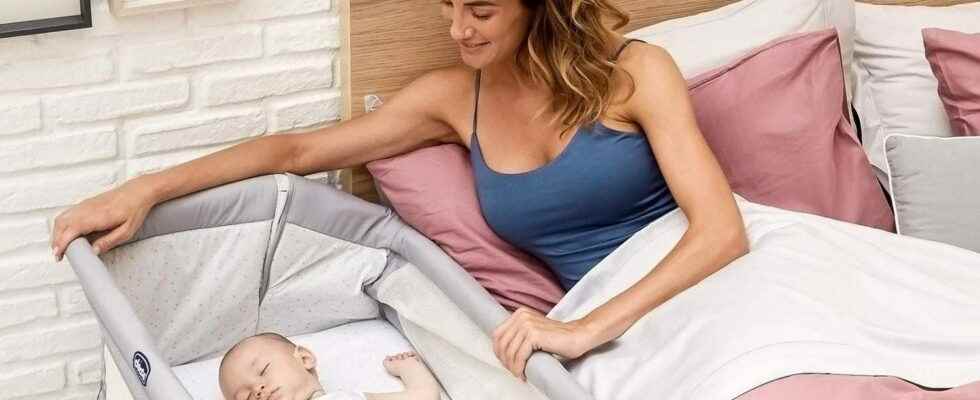Co-sleeping is increasingly practiced by young parents because it allows closeness with baby. Scalable, wooden, on wheels… We help you find the co-sleeping bed you need.
From birth to 6 months, it is recommended that parents have their baby sleep in their room to limit the risk of sudden infant death syndrome. Some parents go further by opting for the co-sleeping, that is, by sleeping with their infant next to them. This practice has the advantage of promoting the creation of the parent-child bond, facilitates breastfeeding, and makes it possible to avoid having to get up when the toddler is crying. To practice co-sleeping, a co-sleeping bed is essential: making him sleep in the parents’ bed is too dangerous. The one must be well chosen, since it must be the same height as the parents’ bed. This is why many co-sleeping cradles are adjustable to several heights. Always from a safety point of view, you must choose a bed with straps allowing it to be fixed to the parents’ bed base. If it has castors, these must be equipped with a brake. This option is advantageous, since it allows the bed to be moved easily. Young parents can be reassured: when they are not lying next to them, all they have to do is close the bed by zipping or sliding the barrier so that the baby is safe. If you travel regularly, we advise you to opt for a foldable and light model, which can be taken everywhere. This will allow you not to disturb the habits of the infant when you are traveling by continuing to practice co-sleeping.
Which mattress for a co-sleeping bed?
Choosing a mattress for a co-sleeping bed is no different than for a classic bed. Choose a mattress the size of the baby’s bed, to avoid a gap between the mattress and the structure of the bed in which the baby can get stuck. Be sure to choose a mattress that is neither too firm – uncomfortable for the baby – nor too soft – dangerous because it can sag. It is therefore the density of the mattress that must be observed: it must be between 20 kg/m3 and 22 kg/m3. In terms of materials: synthetic foams offer good value for money and can benefit from an antibacterial or dust mite treatment, ideal for babies; natural latex is antiallergic and avoids hyperthermia, just like coconut fiber or wool, which is also thermoregulatory. In terms of height, the French NF safety standards indicate that the thickness of the mattress must be between 12 and 15 centimeters. It must also meet the EN 597-1 fire standard.
Co-sleeping bed: up to what age?
The question of the age limit for the co-sleeping bed will depend on the development of the baby, his needs, the will of the parents and the model chosen. Indeed, in the case of an evolutionary model, the bed can be used longer than a traditional cradle. But since this bed communicates with the parental bed, care must be taken to secure it with the 4th side when the baby begins to be able to move on its own in order to avoid falls. Co-sleeping parents can from then on keep the bed in the master bedroom as a step before baby becomes independent in their own room. In general, after a few months when the baby moves, it is time for him to have his own bed, closed.
